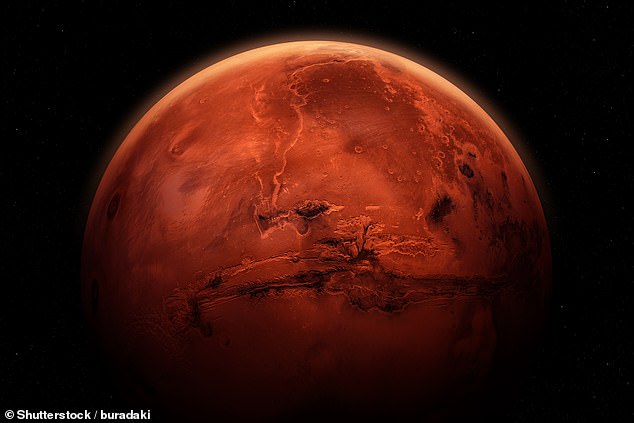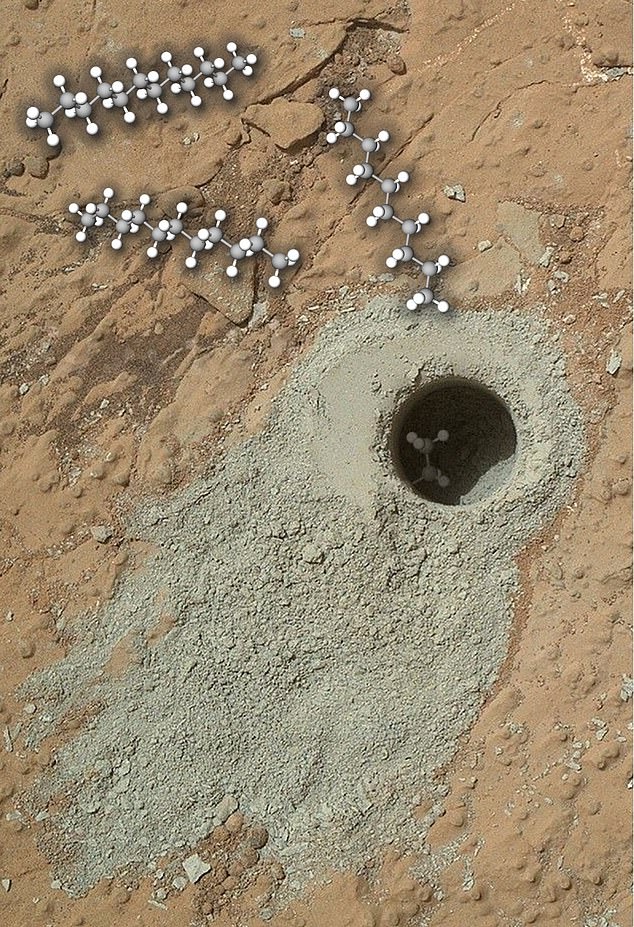Life on Mars? Scientists Uncover Long Organic Molecules on the Red Planet – International Edition
- READ MORE: Rover uncovers signs of 'holiday-like' shores on Mars
Unprecedentedly large organic molecules have been found. Mars , providing additional proof that life might have previously existed on Mars.
Specialists have discovered lengthy carbon chains with up to 12 linked atoms in chunks of Martian rocks that are billions of years old.
These carbon-based compounds – the most extensive ones detected up to this point – might stem from fatty acids, which form the foundation of lipids such as fats and oils and are produced on our planet via biological processes.
Scientists stated that the finding is of 'great interest' in the quest for possible indications of life.
The samples were gathered using SAM, which stands for Sample Analysis at Mars – an instrument installed onboard. NASA The Curiosity Rover, which has been exploring the Gale Crater since 2012.
It features both a gas chromatograph and a mass spectrometer, enabling it to analyze and identify molecules within samples.
The analysis showed that the gathered mudstone includes the organic compounds decane, undercane, and dodecane.
The absence of geological activity coupled with the frigid, dry environment on Mars has aided in safeguarding this precious organic material over the last 3.7 billion years.

The experts stated that this artifact hails from an era when life initially appeared on our planet.
Although fatty acids are a crucial part of living cells on our planet, these compounds can also originate from non-biological or purely physical processes, not related to biology, as they explained.
In the journal Proceedings of the National Academy of Sciences (PNAS), the research team reported that their achievements open up new possibilities for upcoming missions aimed at discovering indications of intricate, life-related chemical processes.
'The organic molecules conserved within the ancient Martian rocks offer crucial evidence for Mars’ potential to support life in the past and might serve as chemical indicators of biological activity,' they noted.
The origin of the long-chain alkanes is still unclear; nonetheless, lab tests suggest they come from the saturated version of straight-chain, primary carboxylic acids [fatty acids].
Even though these acids can be formed through non-living processes, they are regarded as common outcomes of biochemical reactions—both earthly and possibly Martian.
'Hence, the origin and spread of these molecules are highly relevant in the quest for possible biosignatures on Mars.'
Exploring more lifelike chemistry on Mars will be among the objectives of the European Space Agency’s forthcoming ExoMars mission, scheduled to lift off in 2028.


The researchers behind this study will develop an apparatus akin to SAM for Dragonfly—the drone scheduled to investigate Titan’s surface, Saturn's biggest moon, starting in 2034.
A recent independent study suggested that Mars previously had sunny shores with tranquil, wave-lapped sands.
Scientists found signs of a 'getaway-like' setting on the Red Planet, even though no observable liquid exists on Mars’s surface nowadays.
A global group of researchers leveraged information gathered by China’s Zhurong Mars rover to uncover concealed strata beneath the Martian terrain, which provides compelling evidence for the existence of a massive prehistoric ocean in what is now the planet's north.
The latest study provides the strongest indication so far that the planet previously had a substantial amount of water and a more conducive setting for life, according to the scientists.
Read more
Post a Comment for "Life on Mars? Scientists Uncover Long Organic Molecules on the Red Planet – International Edition"